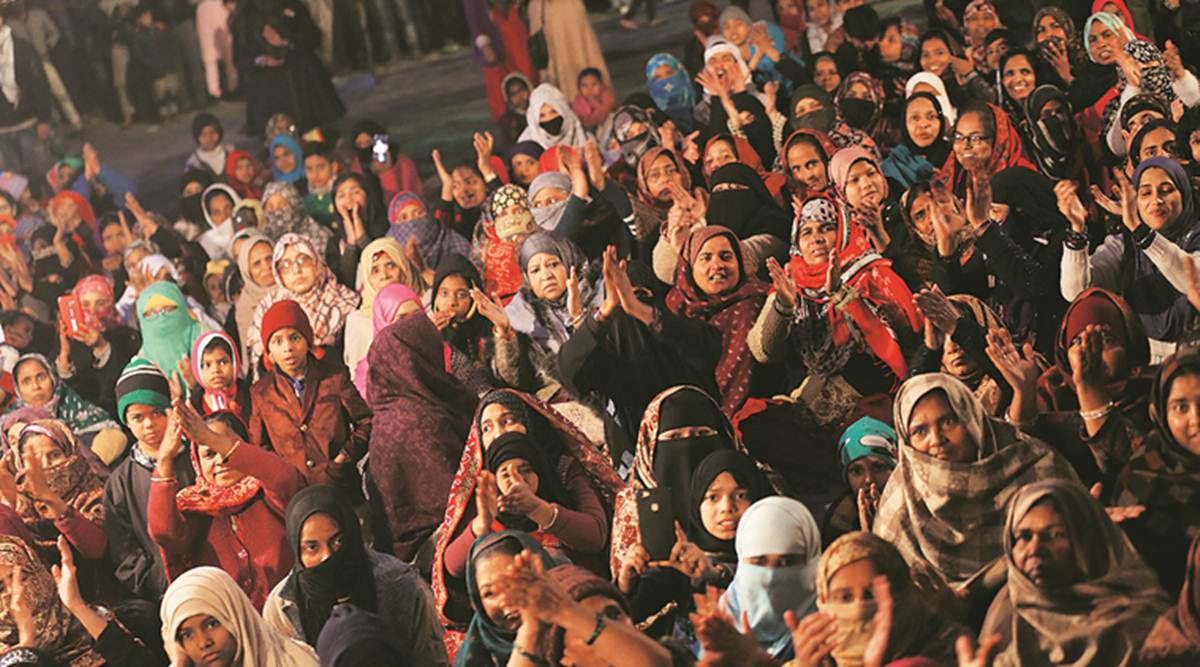
Women protest at Shaheen Bagh in New Delhi against CAA – File Pic
This even so the issues of demography and identity have always held sway in UT. More so, in Kashmir Valley where the Muslim majority has always been paranoid about the alleged designs to change its demography. This is why Article 370 was so close to the hearts of people. The constitutional provision not only granted J&K a degree of autonomy in its internal affairs, it also prohibited people from rest of country from settling down in the erstwhile state.
Over the years, anything that was deemed to lead to some tinkering with J&K’s demography instantly became a contentious issue. One such issue concerned West Pakistan Refugees or WPRs. When Article 370 applied to J&K, the issue of West Pakistan Refugees had acquired complex legal and political dimensions. Whenever, the issue of settling down these refugees in J&K was discussed, it invariably got enmeshed with the lingering politics of conflict in the state.
Successive state governments argued that as per the Section 6 of the J&K Constitution, comprising the state subject notifications issued by the Maharaja Hari Singh in 1927 and 1932, the West Pakistan Refugees were not covered under any category of the Permanent Residents. The section was strengthened by the provisions of the Article 370 which conferred special status on J&K within Indian Union. According to Article 370, the state government could not give citizenship rights to anyone who was not the permanent resident of the state. And this included people both from the rest of India and from Pakistan.
There was a parallel contentious issue that was similarly a major bone of political contention in the state: It was Jammu and Kashmir Resettlement Act which grants the right of return to state subjects who fled to Pakistan or Pakistan Occupied Kashmir after the Partition riots in Jammu, among them also thousands of families who migrated to other side from Kashmir Valley. The two issues are inter-connected and under Article 370 it was inherently politically polarizing to push the case of one set of refugees to the exclusion of another. While majority in Jammu opposed Resettlement Act, it supported citizenship for the West Pakistan Refugees and vice versa in Kashmir Valley.
But after withdrawal of Article 370, West Pakistan Refugees have automatically become citizens of J&K. They are concentrated in Jammu, Kathua and Rajouri districts of the Jammu division. In 2007, the GD Wadhwa committee set up by the state government to look into the refugees’ grievances and demands reported that there were 5,764 such families in 1947, comprising a population of 47,215, but it didn’t estimate their current population. But there is no estimate of the people who have settled in West Pakistan. A case about their resettlement is pending with a constitution bench of Supreme Court since 1982.
But for now J&K seems to have not much to fear from the CAA whereby persecuted minorities from Pakistan, Bangladesh and Afghanistan are due to be given citizenship rights in the country. There aren’t many members of these minorities in J&K. So, there isn’t any immediate fear of a demographic change. Similarly under the NRC, the Muslims in J&K don’t think they have a reason to fear as almost all of them have state subject certificates which should work as their domicile proof. Apart from that Kashmir Valley still remains under an instantly operationalisable security lockdown and an internet gag which has seriously impacted the information of the people about the current affairs. This has, in turn, affected the nature of response by the people to the evolving situation.
Follow this link to join our WhatsApp group: Join Now
Be Part of Quality Journalism |
Quality journalism takes a lot of time, money and hard work to produce and despite all the hardships we still do it. Our reporters and editors are working overtime in Kashmir and beyond to cover what you care about, break big stories, and expose injustices that can change lives. Today more people are reading Kashmir Observer than ever, but only a handful are paying while advertising revenues are falling fast. |
| ACT NOW |
| MONTHLY | Rs 100 | |
| YEARLY | Rs 1000 | |
| LIFETIME | Rs 10000 | |










